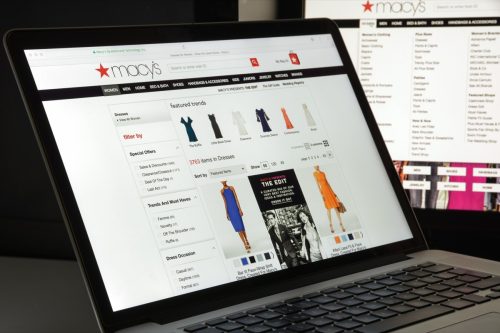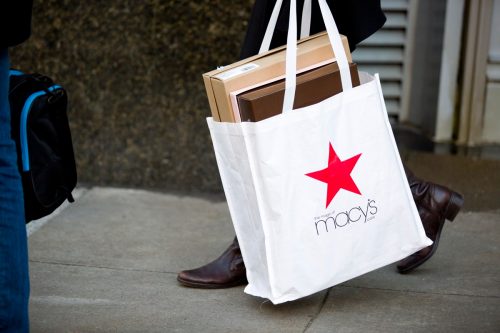Shoppers Are Abandoning Macy’s, New Data Shows—Here’s Why

These days, it’s not surprising to hear that department stores are struggling. Their business model invites you to browse through the varied sections at brick-and-mortar stores, but with online shopping now more convenient than ever, many customers prefer to pick up what they need without leaving the house. Even so, Macy’s is one department store that has managed to stay afloat, and it remains an iconic American mainstay. But while brand loyalty goes a long way, shoppers are now abandoning the trusted Macy’s name. Read on to find out what new data reveals about shifting customer habits.
RELATED: Shoppers Are Abandoning Target, CEO Says—Here’s Why.
In-store and digital sales were down, as was revenue.

In a Nov. 16 press release, Macy’s revealed its earnings from the third quarter, reporting a 7 percent drop in year-over-year sales. Both brick-and-mortar and online sales declined by 7 percent, while comparable sales (same-store sales that include licensed sales) were down 6.3 percent compared with the same time in 2022.
Net income also fell to $43 million, which was a whopping 60.2 percent drop from the same period last year, Retail Dive reported. Revenue, too, slumped to $4.86 billion, compared with $5.23 billion last year.
Same-store sales at Bloomingdale’s, which is under the Macy’s banner, fell as well—and for the Macy’s legacy brand alone (not including any other owned brands), same-store sales fell by 7.6 percent.
RELATED: Shoppers Are Abandoning Wayfair, New Data Shows—Here’s Why.
There were some positive notes in the report.

While these numbers may seem grim, Macy’s did beat Wall Street’s expectations last quarter. It generated more revenue than analysts predicted by $40 million ($4.86 billion vs. $4.82 expected), and its same-store sales decline also bested predictions (6.3 percent vs. 7.75 percent expected).
Additionally, comparable sales were up at Bluemercury, Macy’s luxury beauty brand, while both off-price brands (Bloomingdale’s outlet stores and Macy’s Backstage) outperformed Macy’s full-line stores, executives said during a call with investors.
“We delivered better-than-expected top and bottom line third quarter results and are entering the holiday period in a healthy inventory position,” Jeff Gennette, chairman and CEO of Macy’s, Inc., said in the press release. “Our portfolio of nameplates are leading gift-giving destinations across the value spectrum offering exclusive products. We have refined our gift assortment, simplified our promotions and improved our shopping experience.”
RELATED: Shoppers Are Turning Away From Walmart—And Ozempic May Be to Blame.
Macy’s is staying confident during the holiday season.

Gennette emphasized the holidays as a period when Macy’s will thrive, aided by several factors—including an extra weekend to shop ahead of Christmas this year. Considering this, the company is actually projecting better numbers for the fourth quarter.
According to CNBC, Macy’s raised its expected sales range from $22.8 billion to $22.9 billion. It’s also projecting same-store sales to decline by up to 7 percent, which is better than the previous estimate of a 7.5 percent decline.
Analysts say there’s more that can be done.

Speaking with Retail Dive, Neil Saunders, GlobalData managing director, recognized Macy’s efforts to become more efficient—namely by managing inventory, costs, and markdowns—but said there’s more that needs to be done in terms of the top line. Specifically, Saunders said Macy’s should improve existing stores, as well as product assortment and customer service, while simultaneously opening more of its smaller footprint stores.
“The sad truth is that, over time, more and more customers have abandoned Macy’s—and particularly the Macy’s nameplate—because it has simply failed to deliver the shopping experience that they want,” Saunders told Retail Dive. “On top of that, among existing customers share of wallet continues to move downward, largely because of poor standards and execution, especially in stores.”
RELATED: For more up-to-date information, sign up for our daily newsletter.